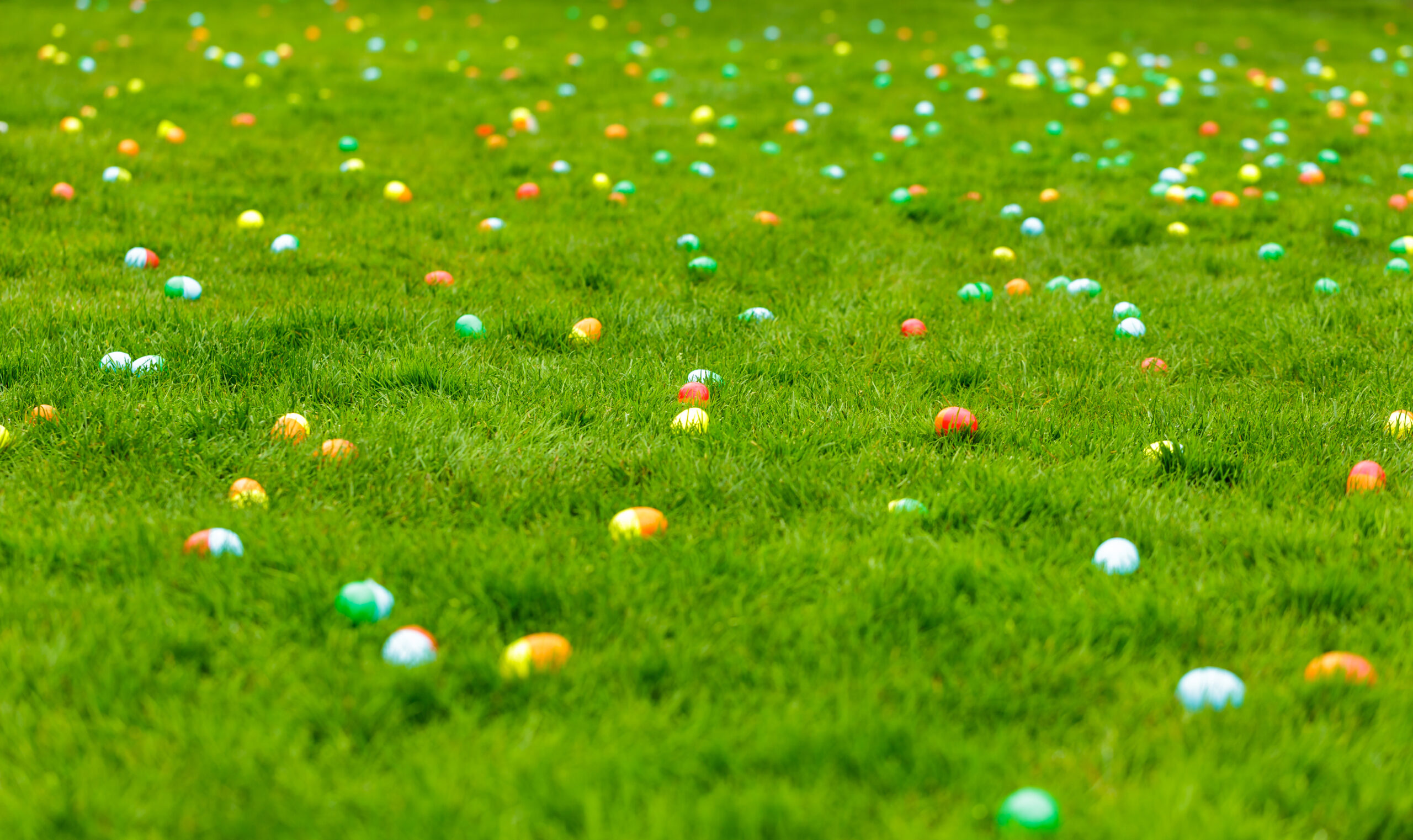Pests and Candy and Easter Eggs – Oh My!
Pests and Candy and Easter Eggs – Oh My!
Happy early Easter from Green Pest Services! The most common tradition associated with this holiday is, of course, the classic egg hunt. A popular method is to get together with other families and watch as all the kids participate in a massive egg hunt. But the majority of the time, a classic egg hunt in the backyard is the preferred choice due to its ease and simplicity. The actual hiding and finding of the eggs is pretty easy, but the situation can get much more complicated when invasive pests find the leftover eggs and candy to be more intriguing than their normal food. Let’s look at some easy tasks to complete before and after the hunt in order to prevent pests, as well as a few of the pests that commonly invade the aftermath of this fun tradition.
Before the Egg Hunt

The only requirements for egg hunt preparation are coloring and hiding the eggs, right? Technically, yes, but a lack of attention to detail could lead to disaster – a pest disaster. The easiest mistake to make is forgetting where each egg is hidden, meaning that the children don’t find the last one and the egg will sit and rot. This is not only one of the most disgusting smells on Earth, it is also a common attractant of pests, but more on that later. Before the egg hunt ensues, there are two different ways to make sure this doesn’t happen. One is to count all the eggs that will be hidden, so you can later count the eggs in the kids’ baskets and make sure the numbers match. The other task is to write down the hiding spot of each egg, such as on a notepad like Lucy did in It’s the Easter Beagle, Charlie Brown (maybe the Easter Beagle will show up at your egg hunt too!). There is nothing like the satisfaction of finding the perfect hiding spot for an egg, only for that feeling to dissipate when you forget where it is when the children ask.
Speaking of hiding spots, it is important to be aware of where you’re placing the eggs. Many small critters keep their nests hidden, and these are not the items that you want your children to find when they’re feeling around for Easter eggs. Make sure there isn’t a pest home, like an ant hill or a wasp nest, anywhere near the egg’s location. Also, do not hide any eggs deep inside a bush or thick grass. These plants are always rife with insects and spiders, which will not be very friendly when their home is disturbed. If you want to use the plants, placing eggs on top of sturdy bushes, in the crooks of tree limbs, and on the soil right next to the plant base are some safe bets. Another important step before the big egg hunt is to do a little yard maintenance. It doesn’t have to be a huge project where every single plant is addressed, but mowing the lawn and trimming back overgrowth goes a long way. The egg hunt is meant to be fun, not stressful, and these tips should set you up for a successful day!
Leftover Eggs

Let’s say the unfortunate scenario happens: a dyed egg is forgotten in the yard, likely behind a plant or under a lounge chair. The egg itself will simply rot over the next few days, and the smell can be even worse when temperatures are high. If the smell doesn’t give the egg’s location away, perhaps the arrival of multiple pests will. There are two main pest groups that are attracted to rotten eggs, and for different reasons.
Flies: The main reason why house flies are so gross is because of what they land on prior to walking all over our dinner plates. They like to lay their eggs in rotten or overripe materials, so all of those pathogens will now be on the mother’s legs and the eventual larvae. Any item that they can land on that is a food source for their offspring is good enough for the house fly. A rotten egg would be a prime choice for their egg-laying site, especially if it is hidden well. The number of eggs laid depends on the size of the mother, but each batch can include as many as 150 eggs. She will lay more eggs over the next couple of days, and can lay up to 500 eggs total. That is way too many new flies to be buzzing around the yard for our liking.
Rodents: A different use for a rotten egg is food, and there is one category of pest that would unsurprisingly enjoy this meal: rodents. Rats and mice are omnivores, so they scavenge for all kinds of food sources that most people would turn up their noses at. They enjoy dead organisms and will eat off of these before the detritivores – animals that only eat deceased things – arrive. Since they have a great sense of smell, rats and mice will track the source of the rotten egg smell until they finally find the egg. Rodents will stay with their reliable food source, and will hide in shrubs, trash cans, or wood piles around their beloved rotten egg.
There can be other pest species that are drawn to a rotten Easter egg, but these are the two main ones that specifically enjoy this disgusting item. Once they are done with the egg, the pests turn to other food or shelter in the immediate area, which could be the house itself. In addition to being thorough before the hunt, there are other simple tasks to do both while and after the eggs are all found to truly keep the pests away.
The Aftermath of the Hunt

If there are multiple kids hunting fro these eggs and using their Easter basket candy as fuel, there will be more candy wrappers than you know what to do with. It is a good idea to have a garbage can accessible during the hunt for this reason. Similar to a forgotten egg, a piece of candy or chocolate that is left out is very appealing to multiple pests. Wasps, bees, ants, and rodents all enjoy sweets. If there are multiple pieces in one area, they definitely will not leave on their own. When doing a quick scan of the yard to make sure all eggs were actually found, it is also helpful to check for dropped candy or sticky wrappers.
One of the ways that pests get inside a home is by traveling from their food source in the yard to an entry point on the house. Pests want three provisions: food, water, and shelter. All three can be found in our homes, which is why preventing these invasive species is essential. Throughout the Easter festivities, make sure the doors and windows are completely shut when not in use. With everyone frequently going in and out of the house, it is important to keep these obvious entrances sealed from pests. If the weather is nice and you want to open the windows, make sure the screens are free from large rips and holes. Easter is a fun holiday of celebration and plenty of treats, but all it take is one pest invasion to turn the following days as sour as those sour jelly beans that only some people actually like (while the rest of us prefer the standard ones every time).
Hop To It With Green Pest Services!
Whether or not you’re hosting the egg hunt this year, having a pest-free home is essential. There are multiple frustrations that come with a pest invasion: house damages, contaminated food, health issues, stains, and the general unease that comes with living with a bunch of uninvited critters. With the warm temperatures and the spring blooms, having reliable pest control services is more important than ever. Our experienced pest control technicians are trained to recognize the evidence of a pest invasion, as well as the life stages of dozens of pest species. Contact us for more information on our efficient treatments and how we can ensure that the only surprises you find are leftover candies from this holiday.
Citations
Common name: House fly. (n.d.). UF IFAS Featured Creatures. Retrieved March 3, 2023, from https://entnemdept.ufl.edu/creatures/urban/flies/house_fly.htm
Those hidden eggs could lead to a rodent problem. (2022, May 5). Pest Lock. Retrieved March 3, 2023, from https://www.pestlock.com/those-hidden-eggs-could-lead-to-a-rodent-problem/
8 Creative Ways to Have a Pest-Free Fourth of July
8 Creative Ways to Have a Pest-Free Fourth of July 8 Creative Ways to Have a Pest-Free Fourth of July Summary: The Fourth [...]
A Simple Guide to Preventing Stinging Pests
A Simple Guide to Preventing Stinging Pests A Simple Guide to Preventing Stinging Pests Summary: Stinging insects are more active in warm weather, [...]
These 10 Natural Mosquito Repellents Can Actually Help
These 10 Natural Mosquito Repellents Can Actually Help These 10 Natural Mosquito Repellents Can Actually Help Summary: Natural mosquito repellents are easier to [...]
How to Get Rid of Carpet Beetles
How to Get Rid of Carpet Beetles How to Get Rid of Carpet Beetles Summary: Carpet beetles are sneaky pests that don’t usually [...]
How Do Roaches Affect Asthma and Allergies?
How Do Roaches Affect Asthma and Allergies? How Do Roaches Affect Asthma and Allergies? Summary: It’s no secret that pests impact human health, [...]
These 5 Carnivorous Pests Might Surprise You!
These 5 Carnivorous Pests Might Surprise You! These 5 Carnivorous Pests Might Surprise You! Summary: There are many eco-friendly ways to prevent pests, [...]

